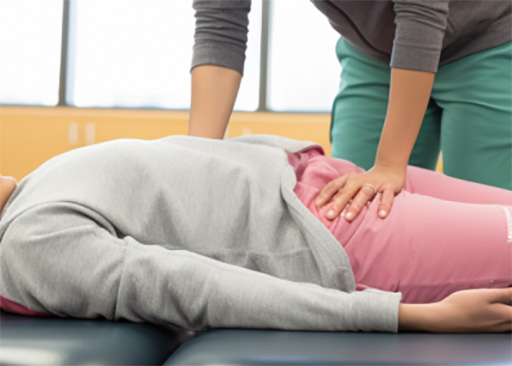Non-Pharmacological Pain Management Strategies

What is Pain?
Pain is a signal from the nerve system that something isn’t right. It can be a prickling, tingling, stinging, burning, or aching sensation. Mild, sharp, or dull, it could come and go or be constant. Pain can be felt in one place of the body, such as the back, abdomen, chest, pelvis, or throughout the entire body.
Two Types of Pain:
- Acute Pain – This type of pain occurs suddenly because of an illness, accident, or inflammation. It’s usually easy to address and goes away when the body heals, but it can sometimes grow into chronic pain.
- Chronic pain – A type of pain that lasts for a long time, sometimes classified into cancer-related and nonmalignant pain, such as arthritis, low-back pain, and peripheral neuropathy. Chronic pain can create serious complications.
The Typical Approach — Medication
Pain relievers are medications that help to alleviate or lessen pain. There are numerous pain medications available, each with its own set of benefits, drawbacks, and clinical trials. Some are OTC (over-the-counter) medications; other medicine is harsher, only obtained through a doctor’s prescription.
Opioids are the most potent medications. They are effective, but they put people in danger of overdose. Here are some common options for pain relief:
- Over the counter medications (OTCs) – obtained without a prescription, including ibuprofen, naproxen, aspirin, and acetaminophen. These drugs work by targeting the hormone levels or pain receptors in the brain. Acetaminophen also affects regions of the brain that regulate body temperature and is commonly used to reduce fevers. They trigger the mind to reduce pain.
- Prescription pain relievers and narcotics – Prescribed by a doctor and include OTC pain medication at a higher dose than what is usually available. Hydrocodone (Vicodin and Norco), oxycodone (OxyContin), and morphine are some examples, and they are significantly more powerful.
- Corticosteroid injections -This involves injecting a corticosteroid, frequently with a local anesthetic, into the joints to alleviate inflammation. It is a common protocol for inflammatory illnesses like rheumatoid arthritis.
- Surgery – If alternative procedures fail to relieve severe discomfort, surgery is considered the last resort. Surgical intervention is for severe pain that has been unable to respond to conventional protocols.
The Dangers of Medication
There are dangers to consuming medicine for pain relief, primarily when used for long-term pain management. It is the case for people with such as arthritis, tendonitis, cancer, and chronic migraines. But the ordinary patient is not exempted from the risk. Even OTC drugs, when used for an extended period, can cause adverse effects.
First, drugs can interact with one another, meaning that a pain reliever may influence something an individual is taking for a different reason. Second, drugs have other health risks like psychosis, ulcers, and depression. Lastly, many people become addicted to them after using them for lengthy periods or for a persistent and excruciatingly painful condition.
Considering this and the opioid crisis, many patients and doctors are rethinking their pain-relieving prescriptions.
Rethinking Pain-Relief Prescriptions
As a practitioner, you already know the downsides of opioids and other pain relief drugs. Unfortunately, it is not always convenient to recommend different methods that may be less invasive to a patient in pain. Nonetheless, the importance of non-pharmacological pain management is worth considering, especially those who have lived with pain for a long time.
Drugs, particularly opioids, are high-risk medications that can cause respiratory depression and abuse, and addiction in patients. Furthermore, more patients suffer from comorbidities, and the likelihood of experiencing drug effects is greater. Globally, health care institutions are re-evaluating their processes and procedures, and you should, too.
Management of Pain Without Medications
When creating a personalized pain management plan for your patient, it’s critical to use a systematic approach to control all aspects of the patient’s pain while concentrating on symptom reduction. Non-pharmacological therapeutic alternatives eliminate the need for drugs or, at the least, reduce the recommended dosage. As such, you can reduce the effects and the risk of abuse in your patients.


What Is Non-Pharmacological Pain Management?
It is the management of pain without the use of pharmaceuticals/drugs. This strategy employs techniques that alter your patients’ thoughts and sharpen their concentration. Some aspects have been thoroughly explored during the last 20 to 30 years, while others are new. More so, some have existed for centuries and are only now scientifically investigated.
Non-Drug Protocols
Non-pharmacological pain management options divide into two main categories:
- Psychological care
- Complementary therapies and other methods
Psychological Approaches
- Appropriate Preoperative Information Giving
It entails psychologically conditioning your patients through behavioral education. It’s distressing, for example, to not know what to expect from cancer therapy. However, if your patient is prepared and knows what to expect, their stress level is significantly reduced.
In this situation, a doctor can explain each stage in detail, using simple illustrations when appropriate, make themselves available to a patient to answer questions, and show them the medical rooms. Finally, you can inform your patients about expected outcomes.
- Cognitive Reframing
To control negative thoughts and behavioral issues, psychotherapy (talk therapy) employs talking, active listening, and counseling. It can also assist those suffering from pain, particularly chronic pain, by giving them coping strategies to help them cope with the stress that pain can bring. It also aids in the handling of these thoughts and emotions that might aggravate the pain.
- Visual and Auditory (music) Distraction
Changes in lighting can help to create an environment that encourages muscle relaxation. Music therapy is also linked to muscle relaxation and significant improvements in mental health. Progressive muscle relaxation can help regulate neuro-systems involved in body tension and situational stress, both of which are common in pain. These methods employs relaxation behavioral training and relaxation exercises such as deep breathing and stretching.
Distraction is also commonly employed with children, particularly infants. Preschoolers might be distracted by using colorful, moving objects, singing songs, telling stories, or gazing at books or films. Adults and older children find that watching TV or hearing music is beneficial. Remember to use it as needed, not as a replacement for an explanation.
- Meditation
Meditation is a mind-body technique to focus your attention on anything specific, such as an object, a word, a phrase, or breathing. It aids in the reduction of distracting or unpleasant thoughts or sensations.

Complementary Therapies and Other Techniques
- Electrical Stimulation
It involves applying a modest electric current to your nerves or muscles using a gadget. By disrupting or blocking pain impulses, this stimulation can aid in the resolution of pain.
- Massage Therapy
Massage therapy includes kneading, rubbing, tapping, and stroking the body’s soft tissues. It may, among other things, help people relax and ease tension and pain.
- Physical Therapy
It involves heat, cold, exercise, massage, and manipulation therapies. These can help with pain management, muscular conditioning, and strength restoration.
- Relaxation Therapy
It can reduce muscle tension and stress effects on the body and lower blood pressure. It could entail tensing and relaxing muscles all over the body.
- Acupuncture
Acupuncture stimulates specific areas on your patient’s body called acupuncture points. The most frequent method entails the insertion of tiny needles into the skin. Pressure, electrical stimulation, and heat are some of the other options.
Acupuncture is founded on the idea that Qi (energy) passes through the body in meridians. Acupuncture point stimulation can also help address Qi stagnation.
Does It Work?
Many well-established guidelines for non-pharmacological approaches have a solid body of evidence to back them up. Some of these are preoperative information, acupuncture, visual and auditory (music) forms, massage, relaxation, cognitive reframing, guided imagery, and breathing.
Benefits

They have Minimal Side Effects – Compared to many drugs, drug-free pain management has fewer and milder adverse effects. To reduce the risks, ask your patients about any allergies, sensitivities, or drugs they may be currently taking.
Fewer Reactions With Medications – Drug-free pain management choices are less likely to interact with other prescriptions than pain relievers if your patient is on medicine for another purpose. To identify the best solution for a patient, make sure you are familiar with all the patient’s medications.
It’s Easily Combined – Drug-free pain options can often be used in conjunction with one another. Combining physical therapy with laser therapy, for example, can be potent for long-term pain relief and range of motion restoration.
They Develop Good Habits – Drug-free pain management typically necessitates development of routine care, which can aid in the development of long-term pain and stress management habits.
BioScan for Non-Pharmacological Pain Management
BioScan is a state-of-the-art Galvanic Skin Response (GSR) testing system that the FDA has cleared in the United States. It’s completely portable, fitting into a standard laptop roller bag, and it only takes a few minutes to set up.
As a practitioner, you can use it to perform GSR assessment testing on your patient’s hands or feet using BioScan Technology, which is simple to use, painless, and non-invasive. As such, you can measure changes in the sweat gland activity to know more about your patients’ psychological, emotional, and physiological.
Everyone, from babies to adults and elders, suffers from pain. Lowering your patients’ pain levels maintains their quality of life and promoting healthy habits in the community.
